
Review on Dynatron K17 💨 Cooling Fan with Heatsink by Mark Adams

Great cooler, no instructions
First off, this is a heatsink with a fan attached. For most of us, there is nothing sexual about it. Easy to install, works well, fan is quiet. The description of the item does not specify which sockets it fits, but other reviewers have indicated that it fits motherboards with LGA 1155 processor sockets; The computer I was repairing had such a socket, and as expected, this cooler fitted the motherboard perfectly. For example, if the motherboard and drive bays are positioned such that the drives must be slid over the processor to fit in the bays, then this cooler may not be for you, even if it fits your motherboard cooler bracket. This cooler has spring loaded screws that are permanently attached. which screw into standard threaded cooler mounts on the motherboard. If your motherboard has brackets for installing push pins, you might be better off looking at a cooler with push pins. (See the INSTALLATION section for more info.) I would give this cooler 5 stars if it was just quality, but I'm giving it one down due to the lack of installation instructions, poor packaging, and not having everything needed for installation . In the box. The rest of the review is my recommended installation order. INSTALLATION The package includes a cooler and a fan (mine came detached from the cooler) and motherboard mounting adapters. It does not include instructions or tools. So if you have never installed a CPU cooler before, you can find some instructions or videos online. In addition to this cooler, you will need a #2 Phillips screwdriver. Your screwdriver should have a long, thin shaft; There may not be enough space around the cooler to tighten the screws with a short screwdriver. If you are replacing a failed heatsink, you will also need high-strength isopropyl alcohol and cotton swabs or alcohol preparation to remove the old thermal paste from the processor, possibly a razor blade to gently scrape the dried thermal paste. and a clean coffee filter to complete the cleaning. If your old cooler was secured with push pins, you may also need a thin, strong blade to gently pry the glued push pins from the underside of the motherboard. (Better still, if you haven't already bought and know that your motherboard has push-pin mounts, now is the time to stop reading and start looking for a replacement cooler that attaches with push-pins; you'll save yourself a lot of trouble, by not trying to change the system mounts.) The underside of the heatsink is pre-coated with thermal grease, but the plastic pads that keep the cooler from rattling in the box during shipping are loosely attached to the cooler once you open the box open , be careful not to damage the thermal paste. Now we are ready to install! - Brackets - If your motherboard already has the standard CPU cooler screw brackets, proceed to Preparing the CPU. Chapter. If you are building a system with a new motherboard that does not already have brackets, continue to the next paragraph. If you know you need to replace the cooler brackets (because the existing ones are push pin brackets), remove all extra cards and connectors from the motherboard, separate the motherboard from the case, remove and flip it over. Hopefully the old mounts are screwed or snapped in and you can just unscrew or take them off. If the old fasteners are held in place with glue, take a blade and gently slide it under a fastener and gently and patiently pry the fastener free. You don't want to tear the motherboard's surface, which may contain circuit boards that could be damaged if ripped. (I warned you this would be a problem!) The brackets that come with this kit are easy to remove. Given the difficulty of removing such brackets, I don't recommend installing them, but most people don't change CPU cooler brackets regularly. So if you don't have anything better, go ahead. . The process is very simple. Remove the paper from the side of a bracket that has threaded tubing protruding. Hold the motherboard so that you are facing down (the processor is on the top, which should be facing AWAY from you) and look at the area just below the processor. You will see four holes, one in each corner of the processor. Position the bracket so its threaded tubes go through two of these brackets and press into place. Repeat for the second attachment. Place the motherboard back into the case. CPU preparation. If you are installing a new CPU, read the CPU preparation guide that came with it; may not need anything. If you're replacing an old cooler, you'll need to clean the top of the processor to remove any residual thermal paste. Use alcohol and swabs or an alcohol preparation to wipe the compound from the processor while it is still wet. The dried mass can be carefully scraped off with a blade, but be careful not to scratch the top of the processor. If possible, it is better not to use the blade at all. Also, do not touch the CPU as the oil from your fingers will leave fingerprints that could affect the performance of the new thermal paste. Fan. My radiator fan was not mounted on the heatsink. It just snaps into place, but the question is when. This isn't so important if your motherboard and case leave you plenty of room to work; In this case, you can install the cooler on the motherboard first, and then connect the fan. In my case, I knew beforehand that the seats were going to be a bit cramped, so I hooked up a fan and then tested the cooler. If you have more space in your case, it will be easier for you to install the heatsink first and then mount the fan on it. Just make sure the fan pins are pointing toward a part of the motherboard that doesn't have any protruding components preventing you from inserting the fan. The cable is quite long no matter which way the fan is pointing, so you shouldn't have any trouble connecting it to the fan connector on the motherboard. radiator installation. In principle, it's very simple: simply position the screws over the threaded receiving tubes and tighten the screws with a screwdriver. I recommend doing a turn or two on each screw and alternating the screws crosswise, ie starting with any screw, turn a few times, then go diagonally to the screw and turn a few times. to one of the two screws you haven't touched yet and turn one of them a few times, then go to its diagonal and turn a few times. Repeat this process until all four screws are tight. For the untrained, this is where the hardest part is measuring the resistance to determine when the screws are fully tightened. Because the screws are spring-loaded, they all offer some resistance to turning. The screw is fully tightened when this resistance increases sharply. Do not tighten the bolt past this point, or you may break the bolt, snap the threaded tube, or damage something else. Another problem here, especially if you installed the fan first like I did, is that you have to hold the screwdriver at an angle. That's why I specified a screwdriver with a long, thin shaft at the beginning of this review. That's all. At this point, turn on the fan if you haven't already, plug the fan cable into the fan connector and you're done.
- CPU socket: 1155/1156/1150
- Not sure
New products
Comments (0)
Top products in 🧰 Computer Internal Components
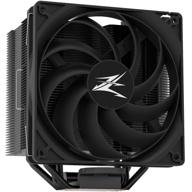
Zalman Performa Performance Powerful Included

172 Review
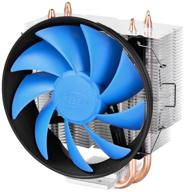
Deepcool GAMMAXX 300 CPU cooler, silver/black/blue

166 Review
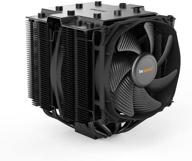
🌬️ Silent Cooling Power: Dark Rock Pro 4 CPU Cooler with 250W TDP, BK022

134 Review

Unleash High-Performance with AMD Ryzen 5 3600XT Processor & Wraith Spire Cooler

223 Review
Another interesting products
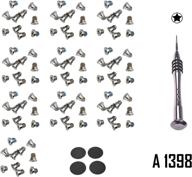
🔧 Premium Repair Replacement Screws & Tools for MacBook Pro Retina 15"/13" - Complete Bottom Case Set

10 Review
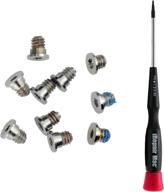
MacBook Retina 13-inch (A1425, A1502) and 🔩 15-inch (A1398) Bottom Case Screw Set with Pentalobe Screwdriver

11 Review
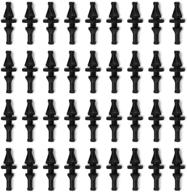
36-Pack Black Rubber PC CPU/Case Fan Screws/Rivets Set for Computer

11 Review

Comprehensive 500pcs Laptop Screw Kit Set for 🔩 IBM HP Dell Lenovo Samsung Sony Toshiba Gateway Acer

12 Review

